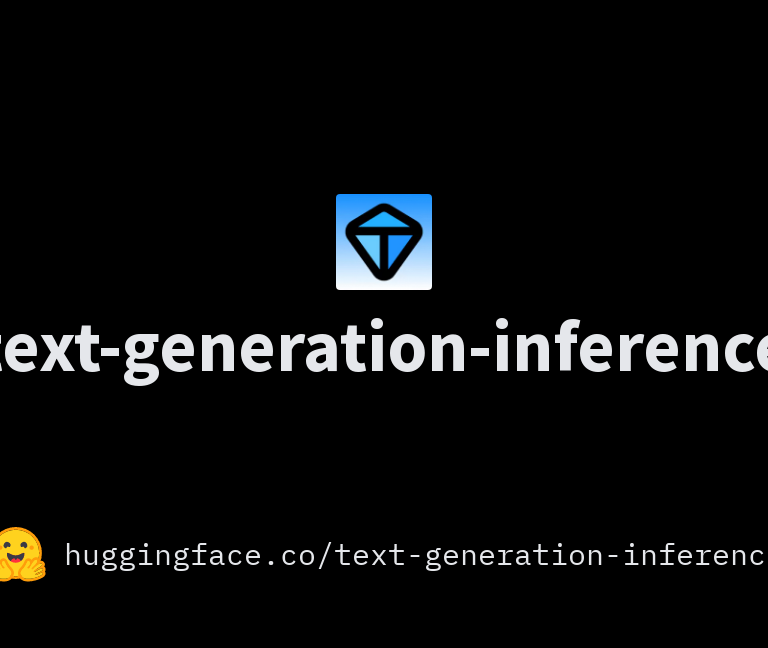In the fast-evolving digital world of 2024, companies are facing an escalating threat from cybercriminals who exploit phishing scams. According to HubSpot With an alarming statistic showing that over 1.2% of all emails contain malicious content and 79% of organizations reporting phishing incidents in the last year, the potential repercussions are severe. The average financial impact of a data breach linked to these attacks exceeds $4.9 million, highlighting the critical need for robust cybersecurity measures.
Phishing tactics have become increasingly sophisticated, capable of disrupting business operations, damaging reputations, and even jeopardizing the survival of organizations. Thankfully, the emergence of Artificial Intelligence (AI) offers promising strategies to combat these threats.

This article will delve into how AI enhances phishing detection and prevention, empowering businesses to safeguard their sensitive information.
What Are Phishing Scams?
Phishing scams are deceptive schemes aimed at acquiring sensitive information, including usernames, passwords, credit card details, and other confidential data. Cybercriminals often disguise themselves as trustworthy entities, employing social engineering tactics to trick individuals into clicking malicious links or downloading harmful attachments.
Phishing attacks can manifest in various forms, such as:
- Email Phishing: The most prevalent form, where attackers send fraudulent emails impersonating legitimate organizations.
- Spear Phishing: A targeted approach aimed at specific individuals or organizations, often using personal information to gain trust.
- Whaling: A more refined type of spear phishing that focuses on high-ranking officials, such as executives or board members.
- Vishing: Voice phishing, where attackers use phone calls to deceive individuals into disclosing personal information.
- Smishing: Phishing attempts carried out via SMS or text messages.
The Shortcomings of Traditional Phishing Defenses
Many businesses still depend on conventional methods to combat phishing scams; however, these strategies often prove inadequate:
- Email Filters: While useful for identifying known malicious senders and suspicious keywords, these filters frequently fail to adapt to emerging phishing techniques, leading to high rates of false positives and missed threats.
- Blacklisting: Relying on a list of known malicious websites and email addresses is a reactive strategy that protects only against previously identified threats and necessitates constant manual updates.
- User Training: Although regular training on phishing awareness is crucial, human error remains a significant vulnerability. Without ongoing reinforcement, the efficacy of such training tends to diminish over time.
These limitations highlight the urgent need for more advanced solutions, where AI can play a crucial role.
How AI Strengthens Phishing Detection and Prevention
AI technology introduces innovative mechanisms to bolster phishing detection and prevention. By utilizing machine learning and data analysis, AI systems can uncover patterns and anomalies that traditional methods often overlook.
Key AI Technologies for Phishing Detection
- Machine Learning: AI systems analyze extensive datasets of phishing instances to identify subtle patterns that may not be noticeable to human analysts. This capability allows organizations to more effectively detect new phishing tactics.
- Anomaly Detection: AI can establish baseline behaviors for normal email traffic within a company, enabling it to flag deviations that suggest potential phishing attempts. For example, if an employee receives an email from a familiar source with unusual requests, the AI can alert them.
- Real-time Monitoring: AI systems continuously monitor all incoming communications, facilitating the identification and neutralization of threats as they arise.
- Behavioral Analysis: AI learns typical email behavior patterns for individual users and departments, triggering alerts for any anomalies. For instance, if an employee who usually works during business hours receives an email late at night, the AI can flag it as suspicious.
- Link and Attachment Analysis: AI enhances the scrutiny of links and attachments in emails by conducting real-time scans of linked websites and files to identify malicious content or behavior.
Practical Use of AI in Phishing Detection
When an AI system encounters a potentially suspicious email, it performs a comprehensive analysis:
- Content Assessment: The AI evaluates the writing style and content against known communications from the purported sender. If discrepancies in tone or structure are found, the email may be flagged as phishing.
- Link Authentication: The system verifies the legitimacy of embedded links and examines destination web pages. If a link directs to a dubious site, the email can be quarantined.
- Timing and Context Analysis: AI assesses the timing of the email against standard communication patterns. An email requesting sensitive information outside of regular business hours can raise alarms.
- Email Header Analysis: The AI inspects email headers for signs of spoofing or manipulation, as any inconsistencies may indicate that the email did not originate from the claimed sender.
- Behavioral Context Evaluation: The AI determines whether the requests made in the email are typical for both the sender and the recipient. If there are deviations from established behaviors, immediate action can be taken.
Upon detecting anomalies, the AI can flag the email for review, quarantine it, or delete it entirely, ensuring enhanced email security.
Implementing AI for Phishing Protection in Your Organization
To effectively incorporate AI into your cybersecurity strategy for phishing protection, consider the following steps:
- Select Appropriate AI Tools: Evaluate your current security infrastructure and investigate anti-phishing solutions like Barracuda Sentinel, Ironscales, or Abnormal Security. Key considerations include:
- Budget compatibility
- User-friendliness
- AI capabilities
- Integration with existing systems
Ensure that the chosen tools seamlessly integrate with your financial processing systems to protect sensitive data.
- Follow Implementation Guidelines: Start with a pilot program in your most vulnerable departments. Provide comprehensive training on identifying phishing attempts and utilizing new AI tools, while continually monitoring performance metrics.
- Maintain Your AI-Driven Security: Regular updates are crucial for ongoing effectiveness. Stay current on emerging tactics, conduct periodic evaluations, and provide continuous training to your team. By adhering to these steps, you can create a robust defense against phishing attacks, powered by AI.
The Future of AI in Cybersecurity
As phishing scams continue to advance in complexity, AI technology will become an increasingly essential component of cybersecurity strategies. Businesses embracing AI-driven solutions will enjoy:
- Continuous Protection: 24/7 monitoring against sophisticated phishing attempts.
- Adaptability: Systems that learn and adapt to new threats will keep organizations one step ahead of cybercriminals.
- Efficiency: Streamlined security processes will conserve valuable time and resources.
Conclusion
The threat of phishing scams is more pronounced than ever in 2024 and beyond. By harnessing AI’s power, businesses can deploy effective strategies to protect their digital assets and reputation. Don’t wait for a phishing attack to compromise your organization; take action now to secure your systems and ensure resilience against evolving cyber threats.
FAQs
1. What is phishing?
Phishing is a cyber attack where criminals impersonate legitimate organizations to deceive individuals into revealing sensitive information, such as usernames, passwords, and credit card details. This is often done through fraudulent emails, messages, or websites.
2. How prevalent are phishing attacks?
Phishing attacks are highly prevalent, with studies indicating that over 79% of organizations experienced such attacks in the past year. This makes phishing one of the most common cybersecurity threats businesses face today.
3. How can AI help prevent phishing attacks?
AI enhances phishing prevention by utilizing machine learning, anomaly detection, and real-time analysis to identify and respond to potential threats. It can analyze email patterns, detect unusual behaviors, and evaluate content for signs of phishing.
4. What are some common types of phishing?
Common types of phishing include:
- Email Phishing: Fraudulent emails that mimic legitimate organizations.
- Spear Phishing: Targeted attacks on specific individuals or companies using personal information.
- Whaling: High-profile attacks aimed at executives or key decision-makers.
- Vishing: Phishing via voice calls.
- Smishing: Phishing through SMS or text messages.
5. What are the limitations of traditional phishing protection methods?
Traditional methods, such as email filters and blacklisting, often fall short due to high false-positive rates, inability to adapt to new phishing tactics, and reliance on user training, which can be inconsistent.
6. How does AI identify phishing attempts?
AI uses various techniques to identify phishing attempts, including:
- Content Evaluation: Analyzing email text for inconsistencies with known communications from the sender.
- Link Verification: Checking the authenticity of embedded links.
- Behavioral Analysis: Monitoring user behavior patterns to flag any anomalies.
7. What should businesses do to implement AI for phishing protection?
To implement AI for phishing protection, businesses should:
- Assess their current security infrastructure and choose appropriate AI tools.
- Conduct pilot programs in vulnerable departments.
- Provide regular training to employees on identifying phishing attempts.
- Keep AI systems updated and perform periodic security assessments.
8. Can AI completely eliminate phishing threats?
While AI significantly enhances phishing detection and prevention, it cannot completely eliminate the risk. Continuous monitoring, regular training, and updates to security measures are essential to maintain a strong defense against evolving threats.
9. What are the future prospects for AI in cybersecurity?
The future of AI in cybersecurity is promising, with continuous advancements expected. AI will play a crucial role in adapting to new threats, automating responses, and improving the overall efficiency of cybersecurity processes.
10. Why is it important for businesses to invest in AI for phishing protection?
Investing in AI for phishing protection is crucial for businesses to safeguard sensitive information, maintain their reputation, and prevent financial losses associated with data breaches. As phishing tactics evolve, AI provides a proactive approach to combating these threats.






